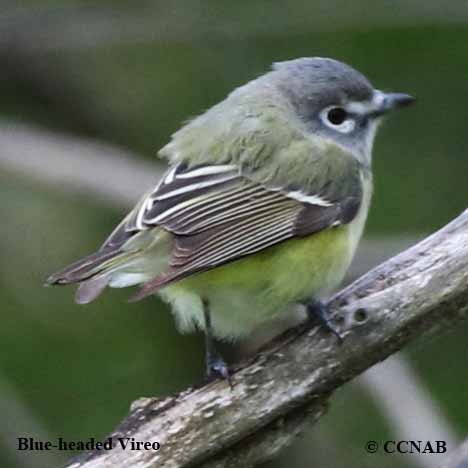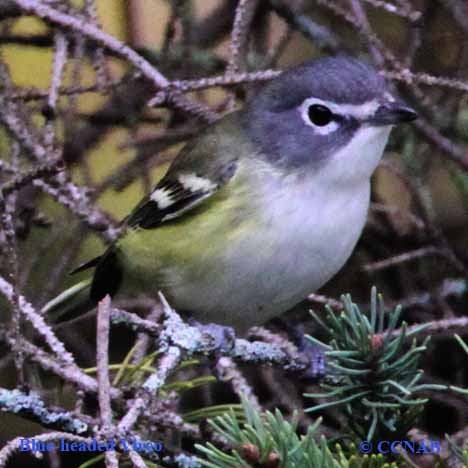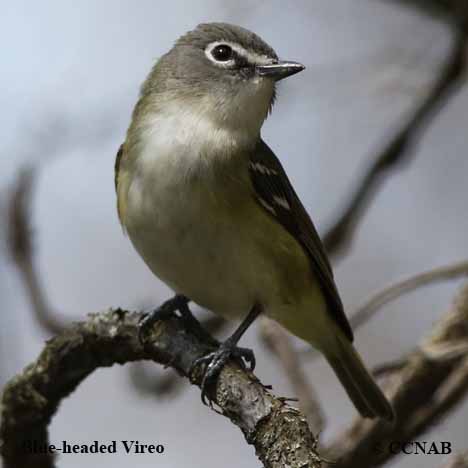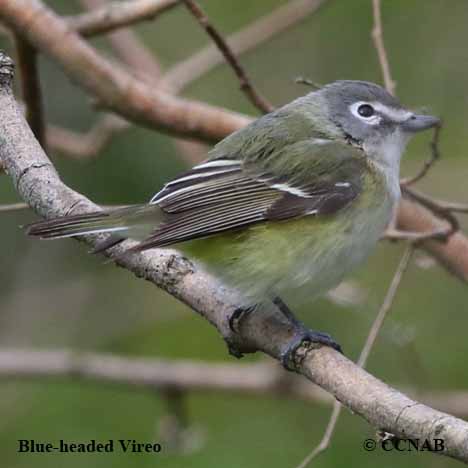North American Bird Search Box
This search box can be used to find bird species using bird's english, french or latin name, or to identify bird by its 4 letter Alpha Code
Field Guide for all the Birds of North America
Blue-headed Vireo
4 Letter (english names) Alpha Code: BHVI (1)
Viréo à tête bleue
Vireo solitarius
Information, images and range maps on over 1,000 birds of North America, including sub-species, vagrants, introduced birds and possibilities
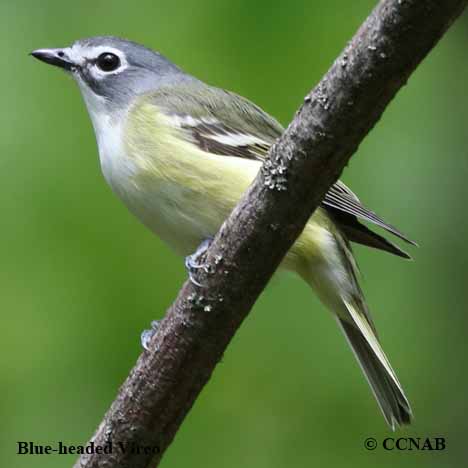
Species: The Blue-headed Vireo (Vireo solitarius), once known as the Solitary Vireo, arrives on the nesting grounds earlier and departs the northern range of its migration later than all other North American vireos in the fall. It is similar in appearance to the Cassin's and Plumbeous Vireos, who were all considered one species and split a short time ago. Like other vireo species, its' main diet is insects and it may eat fruit and seeds in some winter months.
Distinctions: The male and female are similar looking in appearance. It has a large bill with a visible hook at end of upper bill, same identifying features seen in other vireos. Blue-gray head, white lores and white spectacle surrounding the eyes as well as a green back and tail, two yellow wing bars, yellow-tipped primary feathers. Also has a white breast and undertail and yellow flanks.
Voice: Similar song to Red-eyed Vireo, multiple notes, harsher call, does mimic other vireos. Sings as it moves about through the mid and top sections of conifer and deciduous trees.
Nesting: Three to five white eggs, speckled with brown or black spots. Suspended cup like nest, built in the fork of branches. The nest is composed of strips of wood bark, plant fibres and other fine materials.
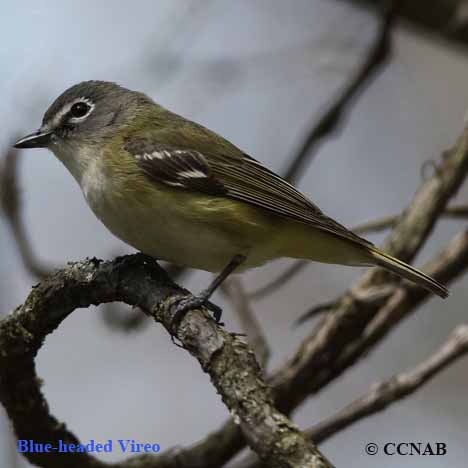
Life, Habitat & Pictures of the North American Vireos
| B L | W W | W | Family | Latin Name |
|---|---|---|---|---|
| 5.5" 14cm | 9.5" 24.1cm | 0.6oz 17g | Vireonidae | Vireo solitarius |
North American Birds Videos
- Click here
- Click here
- Click here
North American Bird Calls
- Click here
- Click here
- Summer
- Year Around
- Winter
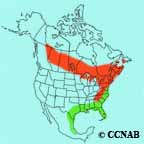
It is found throughout Canada, from western Newfoundland through northern Ontario, across the prairie provinces and touching British Columbia. Staying inside the Canadian boundaries around the Great Lakes and along the eastern/southern Atlantic states. It winters along the eastern southern states west to Texas and into Mexico.
Reference to Other Bird Site:
ABA - American Birding Association This site represents an organization that maintains official records of all birds species that have been proven to have been seen inside the perimeters of the North American Continent and the surrounding bodies of water. Regular revised versions are posted to keep the bird list current at all times. This is the list used by all serious birders over their lifetime. You may be aware of the movie called the "Big Year". It was with this list that all the competing birders used in an attempt to set a new record as to how many bird species that could be seen by an individual birder in one calendar year.
